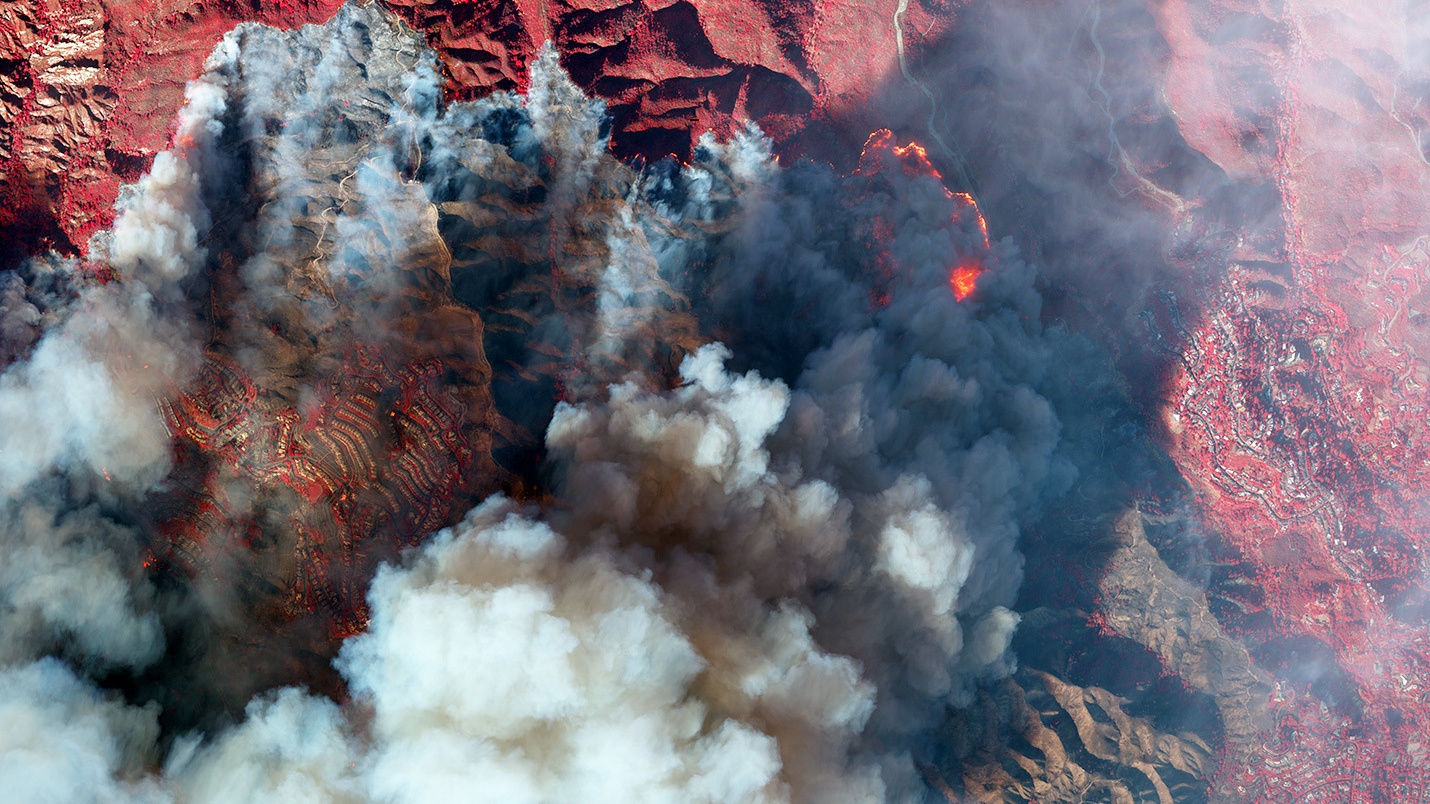
Satellite images show the massive scale of destruction caused by huge, fast-moving wildfires in Southern California that were still raging through Friday (Jan. 10), killing at least 10 people, injuring many more and charring over 34,000 acres of land populated by thousands of homes and businesses.
The timelapse video above shows smoke billowing from the wind-driven coastal Palisades fire in the lower left — the largest of five fast-moving wildfires in Southern California. This particular wildfire ravaged nearly 20,000 acres since it ignited on Tuesday morning (Jan. 7), becoming the most destructive wildfire in Los Angeles history. At the time of writing this article, the Palisades fire is 8% contained.
Another major blaze, the Eaton Fire, is seen in the upper right ravaging Altadena, Pasadena. This wildfire has scorched about 10,600 acres and remains only 3% contained, according to the California Department of Forestry and Fire Protection. A number of actively burning buildings under a blanket of smoke due to this fire were imaged by Colorado-based Maxar Technologies, whose satellite is equipped with an infrared sensor that can see through dense smoke to detect fire hotspots on the ground.
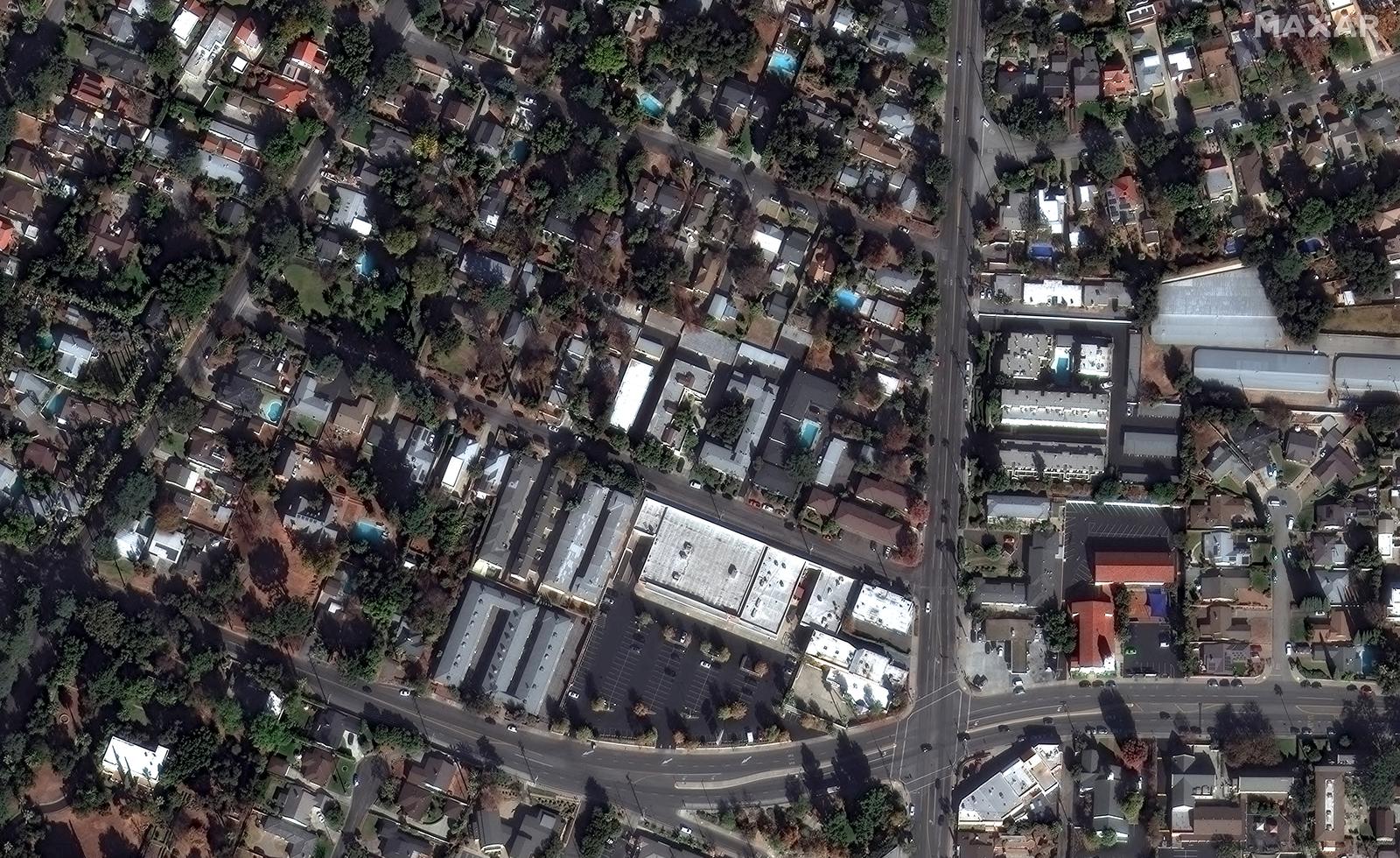
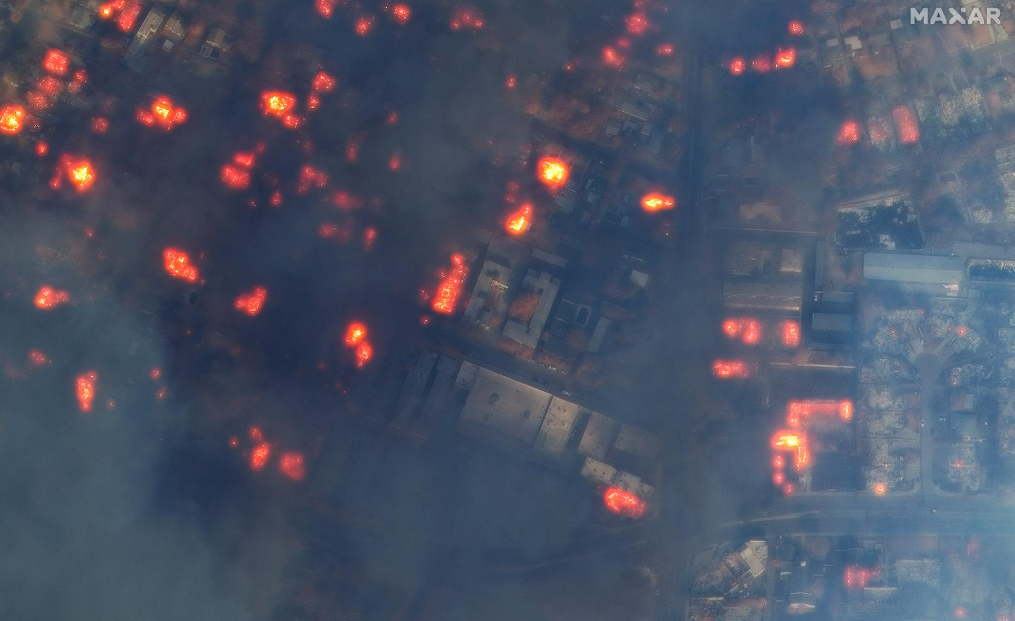
Another set of images capture the charred aftermath of houses that burned along the Pacific Coast Highway, and the remains of Malibu homes where the Palisades fire had retreated.
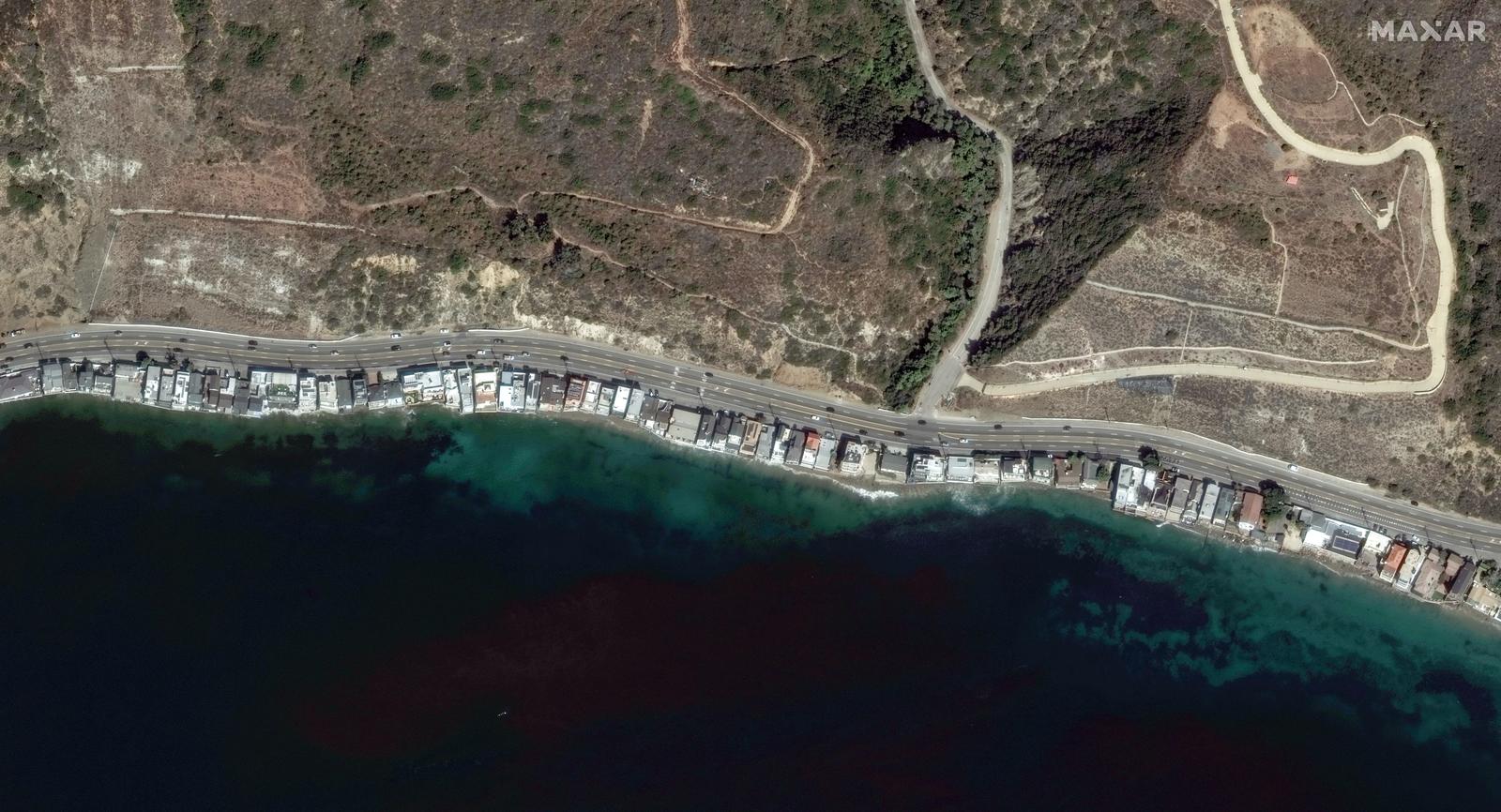

Yet another set shows the a neighborhood in Pacific Palisades, California, before fires burned through neighborhoods in the region and decimated buildings.
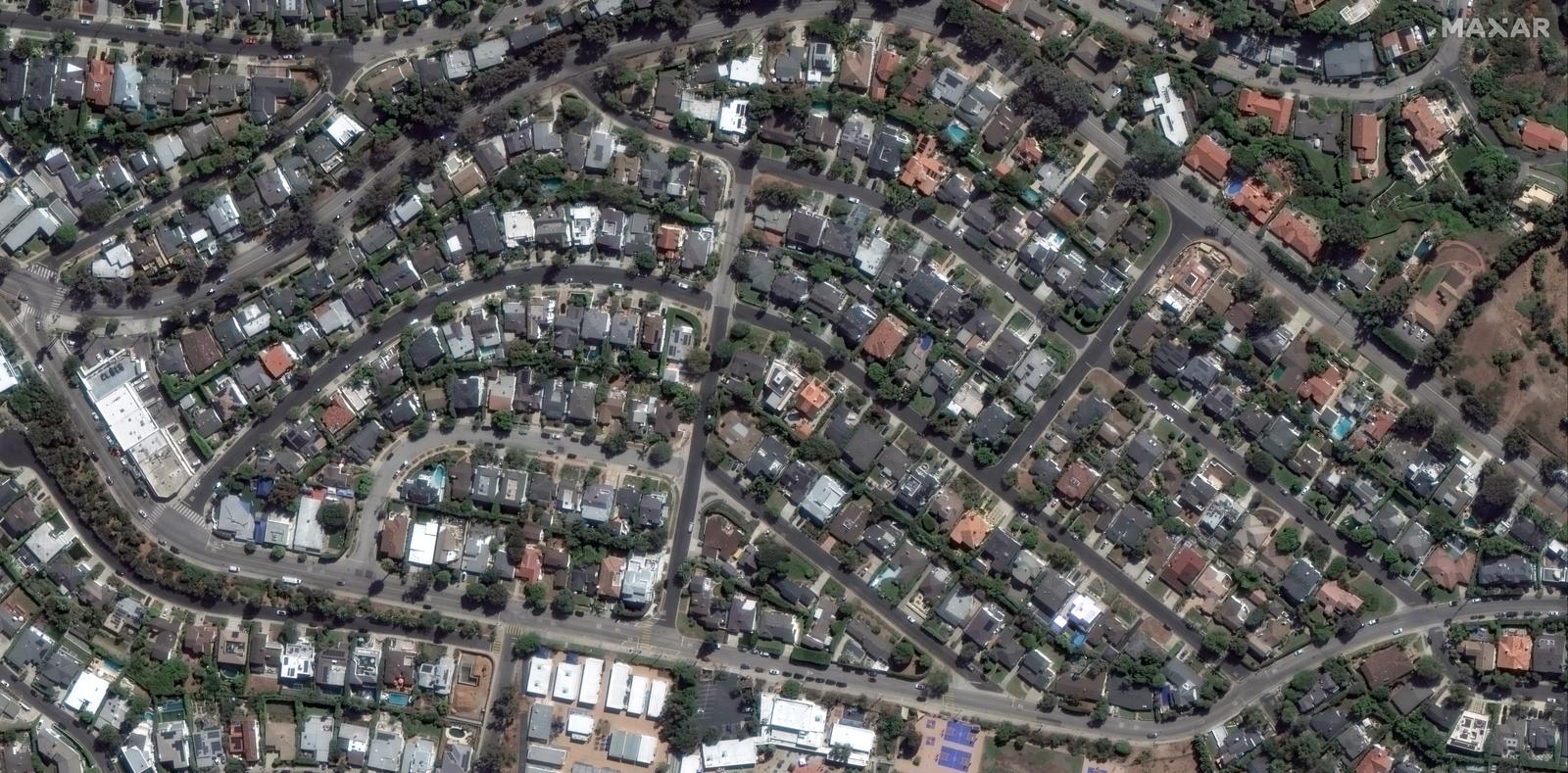
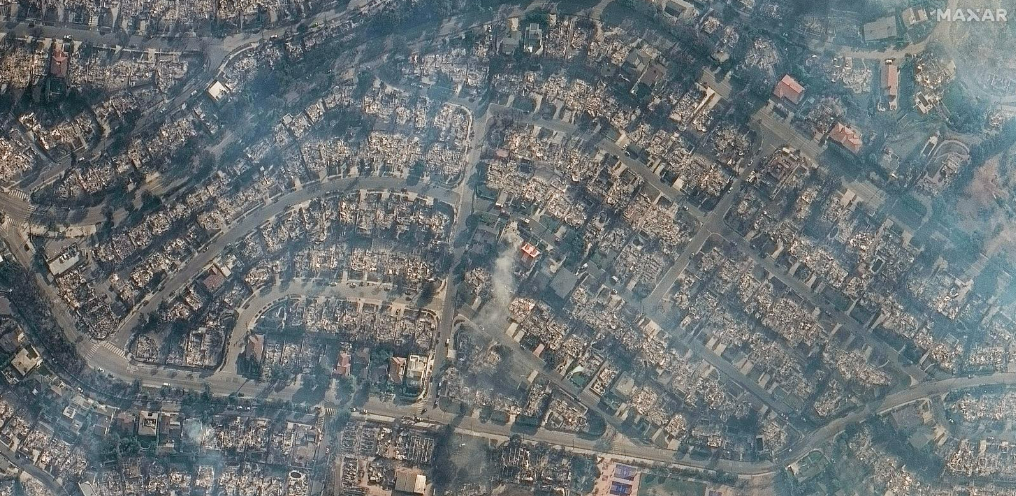
The Eaton fire spread to the base of Mount Wilson on Thursday (Jan. 9), temporarily threatening a slew of transmitters and antennas used for TV and radio station communications, and knocking out the power at the historic Mount Wilson Observatory.
Firefighters brought the flare-up under control by Thursday evening, and there have been no reports of damage to infrastructure. "Our core crew at the Observatory are all safe," Dan Kohne, the observatory's chief operating officer, told The New York Times. “Maybe exhausted, but they can sleep through the night now."
Los Angles fires from @Space_Station. Our hearts go out to everyone affected by this.View is from north of San Francisco looking southward towards LA and San Diego. pic.twitter.com/cDt973QvhuJanuary 10, 2025
Firefighters also kept the deadly flames from reaching NASA's Jet Propulsion Laboratory (JPL), lab director Laurie Leshin said on Friday in a post on X. JPL, which is the space agency's lead center for robotic planetary exploration that runs many high-profile missions, lies at the base of the San Gabriel Mountains just north of L.A. and has been closed since earlier this week due to the Eaton fire.
"@NASAJPL is untouched by fire due to the brave dedication of our first responders," Leshin said in the post. "But our community has been very seriously impacted with over 150 JPLers who have lost their homes and many more displaced."
"We will be sending an update to our employees shortly on plans for next week. Please be patient as we work to bring the Lab back online," she added.
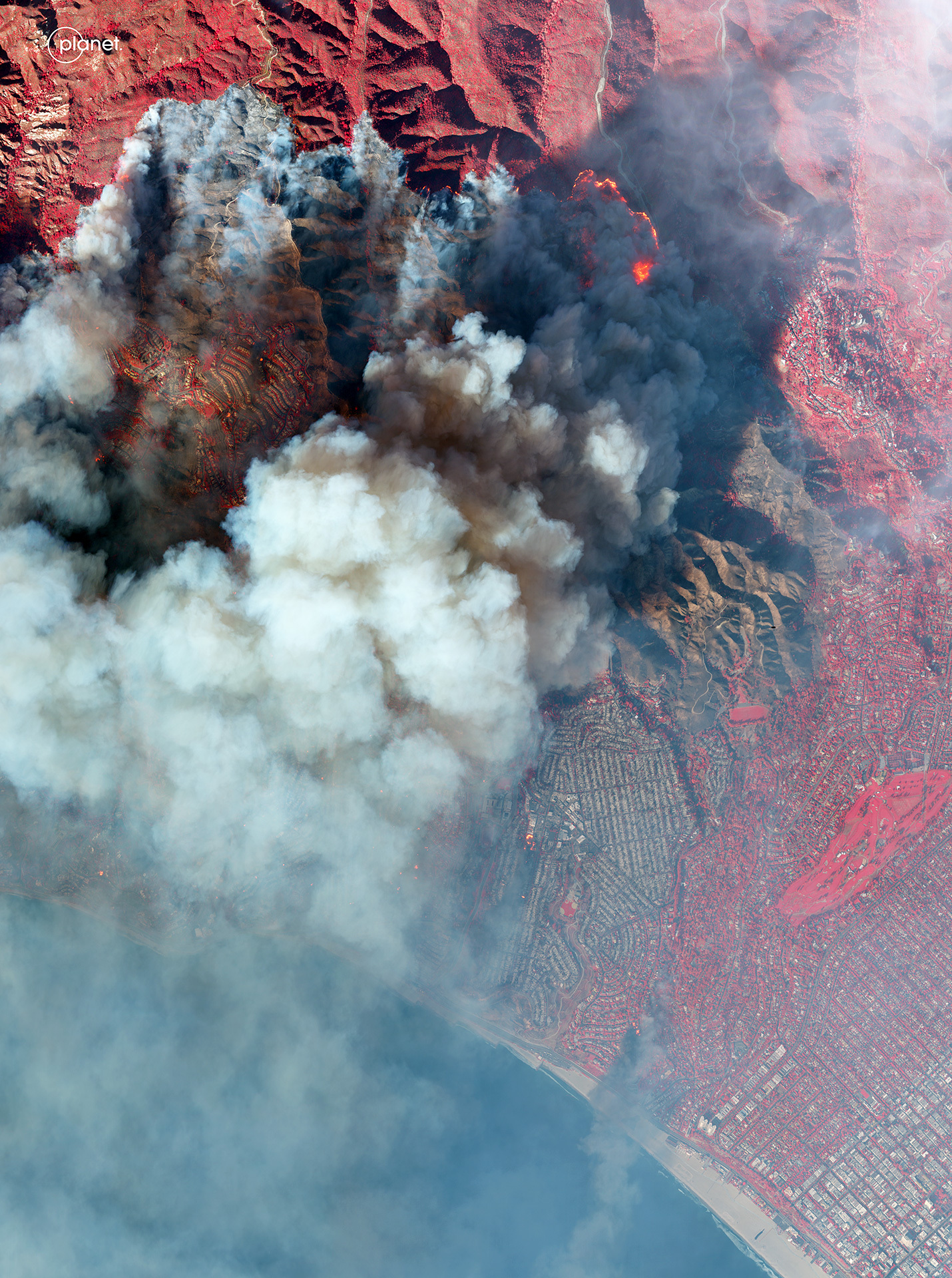
Firefighters continue to battle the insatiable fires, while robust winds coupled with dry conditions in the fire zones could continue complicating firefighting efforts into next week, according to CNN.







